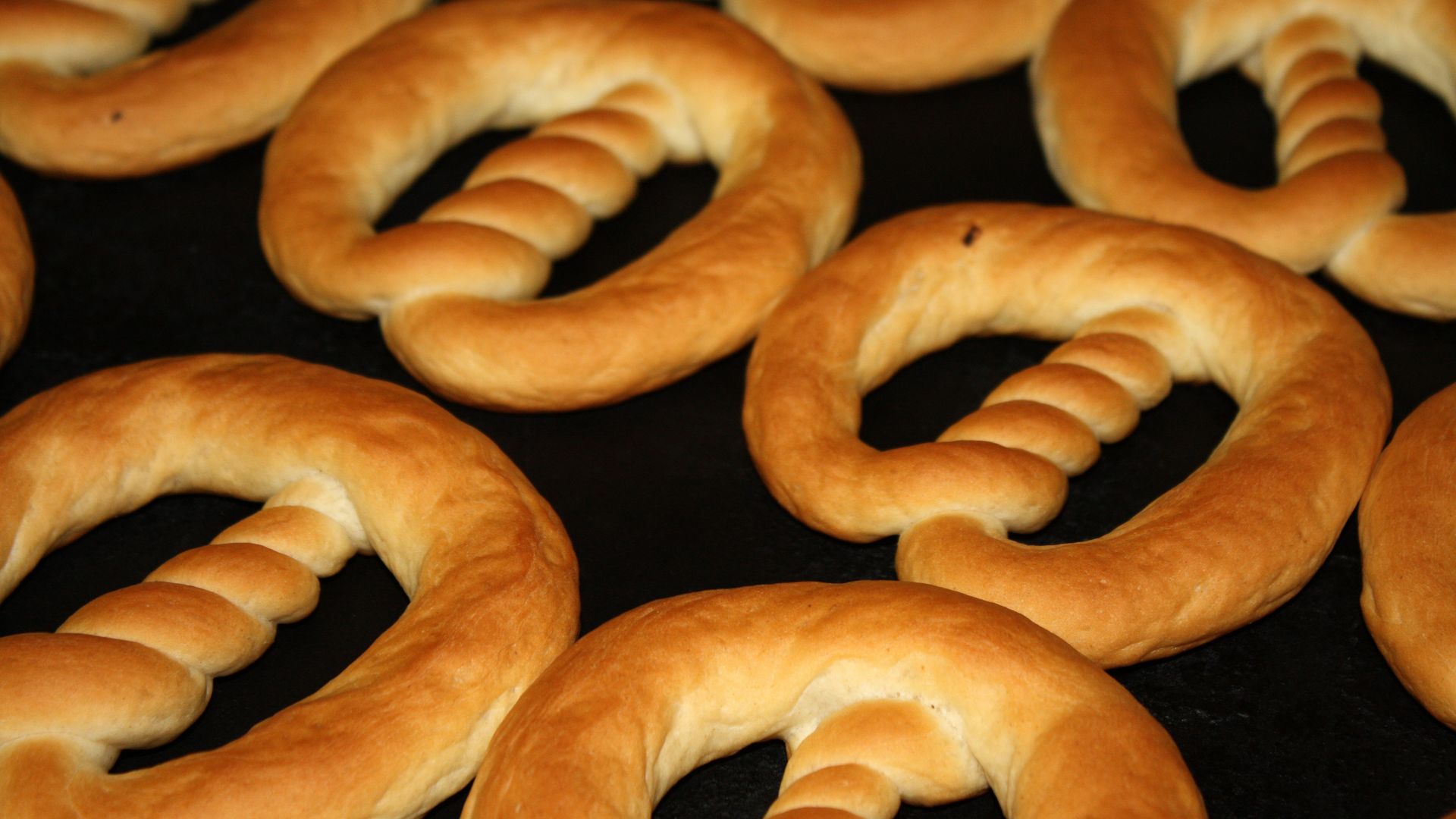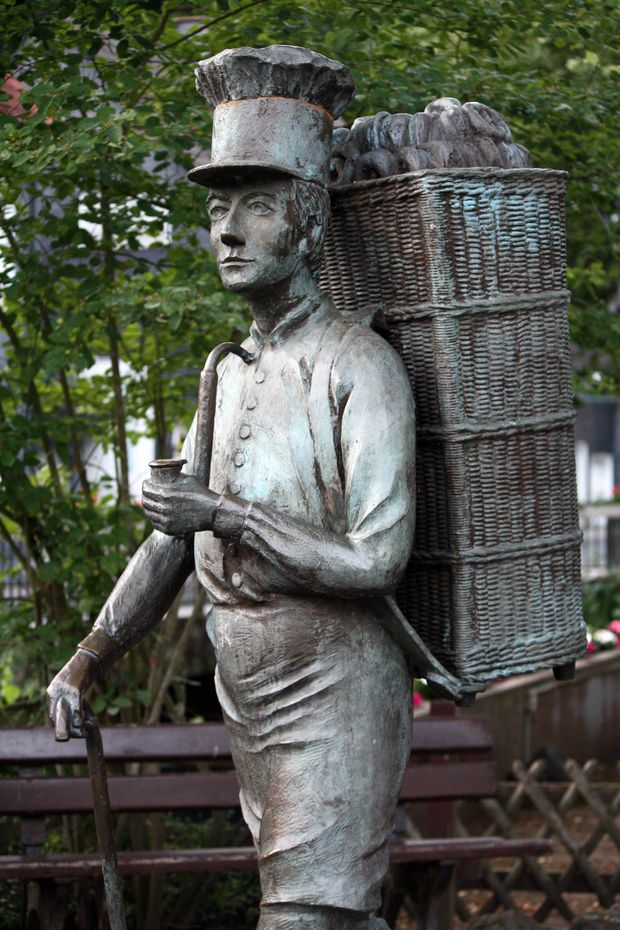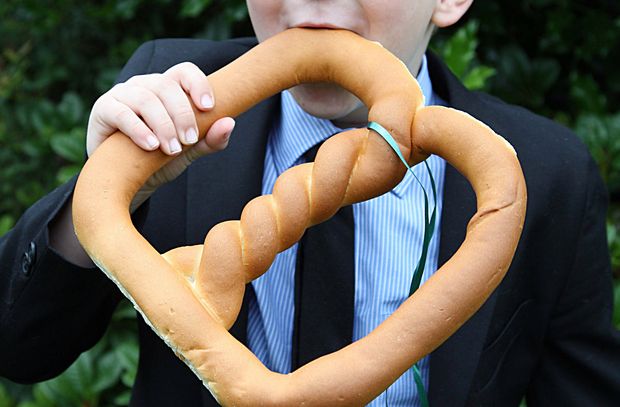Bergisch history to dip
The small town of Burg an der Wupper, a district of Solingen, is still famous today for its artfully looped Burger Brezel. The traditional biscuit, which is more than 200 years old, is now only made by a few artisan bakers and is very special in more ways than one.
Legend of the French soldier
The first Burger pretzel is said to have been baked in the Hösterey bakery in Unterburg around 1795. Legend has it that a wounded French soldier who was a baker brought the recipe with him to the Bergisches Land and showed his professional colleague Johann Peter Hösterey how to make pretzels in gratitude for his good care.
Special shape of the pastry
Visually, the burger pretzel differs from conventional pretzels mainly by its four- to fivefold looped middle strand. To masterfully loop or "spin" the speciality, as the experts say, the skilled baker tosses a long knotted strand of dough into the air, twisting it several times. Just a few hours after baking, the pastry becomes dry and durable like rusks. Only when the pretzels are "dröch" (dry) and rattle in the basket are they right for sale.
Burg at the Wupper - Birthplace of the Burger Pretzel
In Burg at the Wupper you used to see many pretzel men, so-called Kiepenkerle, who often went on sales tours through the Bergisches Land on foot for days with their wicker baskets full of crispy pretzels. In the middle of the 19th century, there were 30 pretzel bakeries in the small town of Burg alone, which could be recognised by a pretzel symbol on the roof of their house. And pretzel bakeries also flourished in the neighbouring towns of Wermelskirchen, Wuppertal and Remscheid.
Snack with tradition and symbolic biscuits
The burger pretzel, made from a low-fat, lightly sweetened yeast dough, was once valued above all as a substitute for bread and as a light meal. The larger pretzel was also popular as a snack for hikers and as a souvenir from the Bergisches Land. On special occasions, such as the New Year, school enrolment or weddings, they were also given as a lucky charm. Alongside Bergische Gusszwiebäcken, Burger pretzels are still an integral part of the Bergischen Kaffeetafel, where the pastry is simply "zoppt" (dunked) into the coffee.


